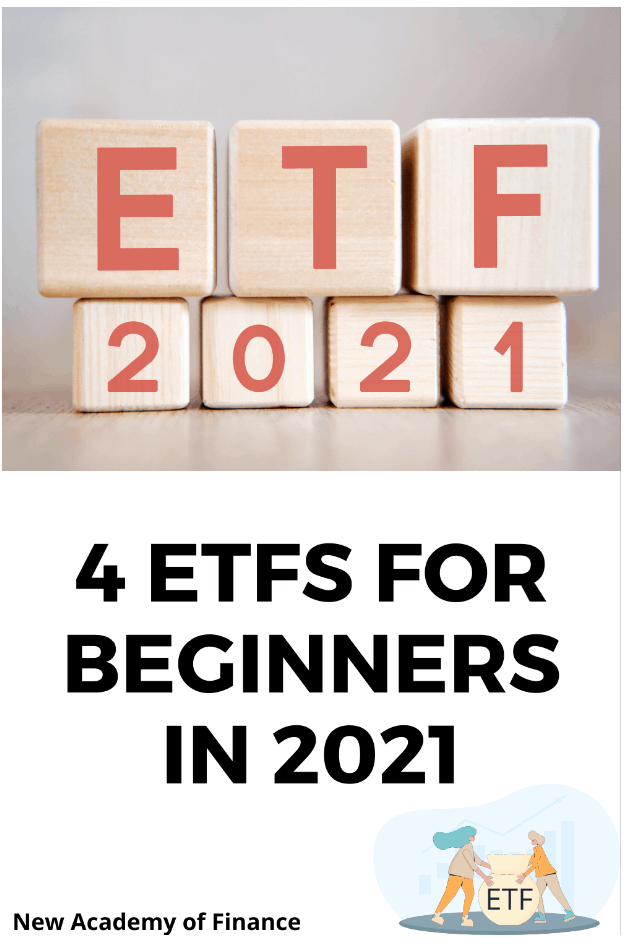
Navigating the Investment Landscape: The Best ETFs for Beginners
Entering the world of investing can feel like stepping into a dense forest without a map. With countless options, from individual stocks to mutual funds and cryptocurrencies, it’s easy to get lost. However, for those just starting their investment journey, Exchange-Traded Funds (ETFs) offer a clear, well-marked path. Combining the diversification of mutual funds with the trading flexibility of stocks, ETFs are an increasingly popular choice for beginners seeking to build wealth systematically and with managed risk.
This article will serve as your compass, guiding you through what ETFs are, why they are particularly well-suited for novice investors, key considerations when choosing them, and ultimately, highlighting the best ETF categories and specific examples to kickstart your portfolio.
What Exactly Are ETFs?
An Exchange-Traded Fund (ETF) is a type of investment fund that holds a collection of assets, such as stocks, bonds, commodities, or a mix of these. What makes ETFs unique is that they trade on stock exchanges, just like individual stocks. This means you can buy and sell ETF shares throughout the trading day at market prices, unlike mutual funds which are typically bought and sold once per day at their end-of-day net asset value (NAV).
ETFs are designed to track a specific index, sector, commodity, or other asset. For instance, an S&P 500 ETF aims to replicate the performance of the S&P 500 index by holding shares of the 500 largest U.S. companies. This passive approach often results in lower management fees compared to actively managed mutual funds.
Why Are ETFs Ideal for Beginners?
Several compelling reasons make ETFs an excellent starting point for new investors:
- Instant Diversification: This is perhaps the most significant advantage for beginners. Instead of painstakingly researching and buying individual stocks, which carries high idiosyncratic risk (the risk specific to one company), an ETF allows you to buy a single share and instantly own a small piece of many companies. If one company in the fund underperforms, its impact on your overall portfolio is significantly diluted.
- Simplicity and Ease of Use: Buying an ETF is as simple as buying a stock. You just need a brokerage account, and you can place an order. There’s no complex application process or minimum investment beyond the price of one share.
- Lower Costs: Most ETFs are passively managed, meaning they simply track an index rather than having a team of analysts actively picking stocks. This translates to significantly lower expense ratios (annual fees) compared to actively managed mutual funds. Over the long term, even small differences in expense ratios can compound into substantial savings.
- Liquidity: Because they trade on exchanges, you can buy and sell ETFs throughout the day, offering more flexibility than mutual funds.
- Transparency: You can easily see the holdings of an ETF, usually updated daily on the fund provider’s website. This transparency allows you to understand exactly what you’re investing in.
- Accessibility: Many ETFs have low share prices, making them accessible even for investors with limited capital. Some brokers even offer commission-free ETF trading.
Key Considerations When Choosing ETFs for Beginners
While ETFs offer many benefits, not all ETFs are created equal, and some are certainly not suitable for beginners. Here’s what to look for:
- Investment Goals and Risk Tolerance: Before picking any ETF, define your goals (e.g., long-term growth for retirement, income generation) and understand your comfort level with risk. Growth-oriented ETFs will be more volatile, while bond ETFs offer stability.
- Expense Ratio (ER): This is paramount. The expense ratio is the annual fee you pay as a percentage of your investment. For index-tracking ETFs, anything above 0.20% is generally considered high, and many excellent options are below 0.10%. Over decades, a difference of even 0.5% can cost you tens of thousands of dollars in lost returns due to compounding.
- Liquidity and Trading Volume: While not as critical for long-term buy-and-hold investors, higher trading volume generally means tighter bid-ask spreads, reducing your transaction costs slightly. For most broad-market ETFs, this isn’t an issue.
- Tracking Error: How accurately does the ETF track its underlying index? For large, well-established funds, this is usually negligible, but it’s worth a quick check.
- Fund Provider Reputation: Stick with reputable fund providers like Vanguard, iShares (BlackRock), SPDR (State Street), Fidelity, and Charles Schwab. These firms manage trillions of dollars and have a long track record of reliability.
- Diversification Within the ETF: Ensure the ETF itself is well-diversified. A "technology ETF" might sound good, but if it only holds a few large tech companies, it’s not as diversified as a broad-market fund.
The Best ETF Categories for Beginners
For beginners, the focus should be on broad-market, low-cost, highly diversified ETFs that provide exposure to the overall economy rather than specific sectors or niche strategies.
1. Broad Market U.S. Equity ETFs (The Core)
These are arguably the best starting point for any beginner. They offer exposure to hundreds or thousands of U.S. companies, providing excellent diversification and tracking the overall performance of the U.S. stock market.
-
S&P 500 ETFs: These funds track the S&P 500 index, which comprises the 500 largest publicly traded companies in the U.S. They offer exposure to about 80% of the U.S. stock market’s value.
- Vanguard S&P 500 ETF (VOO): Extremely low expense ratio (0.03%), highly diversified, and managed by Vanguard, a leader in low-cost indexing.
- iShares Core S&P 500 ETF (IVV): Also boasts a 0.03% expense ratio and offers similar broad exposure. BlackRock (iShares) is another top-tier fund provider.
- SPDR S&P 500 ETF Trust (SPY): The original and most heavily traded S&P 500 ETF. While its expense ratio (0.09%) is slightly higher than VOO and IVV, its immense liquidity makes it popular among institutional traders. For long-term investors, VOO or IVV are generally preferred due to lower fees.
-
Total U.S. Stock Market ETFs: These go even broader than the S&P 500, including small-cap and mid-cap companies in addition to large-caps. This provides maximum U.S. equity diversification.
- Vanguard Total Stock Market ETF (VTI): Tracks the CRSP U.S. Total Market Index, holding over 3,500 U.S. stocks. Its expense ratio is an incredibly low 0.03%. Many investors prefer VTI over S&P 500 ETFs for its even broader diversification.
- iShares Core S&P Total U.S. Stock Market ETF (ITOT): Similar to VTI, tracking a different total market index with a 0.03% expense ratio.
2. Broad Market International Equity ETFs (Global Diversification)
While U.S. stocks are a strong foundation, true diversification requires global exposure. International ETFs allow you to tap into growth opportunities in developed and emerging markets worldwide, reducing your dependence on the U.S. economy alone.
- Vanguard Total International Stock ETF (VXUS): Provides exposure to thousands of companies across developed and emerging markets outside the U.S. Expense ratio: 0.07%.
- iShares Core MSCI Total International Stock ETF (IXUS): Similar to VXUS, tracking a different international index with a 0.07% expense ratio.
3. Broad Market Bond ETFs (For Stability and Income)
Bonds typically offer more stability than stocks and can provide a source of income through interest payments. They often perform well when stocks are struggling, acting as a diversifier in a balanced portfolio. For beginners, a total bond market ETF is the simplest approach.
- Vanguard Total Bond Market ETF (BND): Tracks a broad index of U.S. investment-grade bonds, including government, corporate, and mortgage-backed securities. Expense ratio: 0.03%.
- iShares Core U.S. Aggregate Bond ETF (AGG): Similar to BND, tracking the Bloomberg U.S. Aggregate Bond Index. Expense ratio: 0.03%.
Building a Simple Beginner ETF Portfolio
A common and highly effective strategy for beginners is to create a "three-fund portfolio" using the core ETFs mentioned above. This approach balances growth with diversification and simplicity.
Here are a few examples of how you might allocate your funds based on your risk tolerance:
-
Aggressive (High Growth, High Risk):
- 70-80% VTI (or VOO/IVV)
- 20-30% VXUS (or IXUS)
- No bond allocation initially, suitable for very long horizons (20+ years) and high risk tolerance.
-
Moderate (Balanced Growth and Stability):
- 50-60% VTI (or VOO/IVV)
- 20-30% VXUS (or IXUS)
- 10-20% BND (or AGG)
-
Conservative (Lower Risk, More Stability):
- 30-40% VTI (or VOO/IVV)
- 10-20% VXUS (or IXUS)
- 40-60% BND (or AGG)
Key Practices for Beginners:
- Dollar-Cost Averaging (DCA): Invest a fixed amount of money regularly (e.g., $100 every month), regardless of market conditions. This averages out your purchase price over time and reduces the risk of buying at a market peak.
- Rebalancing: Periodically (e.g., once a year), adjust your portfolio back to your target allocations. If your stock ETFs have grown significantly, you might sell some to buy more bond ETFs, maintaining your desired risk level.
- Long-Term Mindset: Investing in broad-market ETFs is a long game. Ignore short-term market fluctuations, avoid panic selling, and stay consistent with your contributions.
ETFs to Approach with Caution (or Avoid Entirely) as a Beginner
While the focus should be on broad-market funds, it’s equally important to know what to avoid:
- Leveraged ETFs (e.g., UPRO, TQQQ): These aim to deliver multiples of an index’s daily returns. They are extremely risky and designed for sophisticated day traders, not long-term investors.
- Inverse ETFs (e.g., SH, SQQQ): These aim to deliver the inverse of an index’s daily returns, essentially betting against the market. Also highly risky and not for beginners.
- Highly Niche or Thematic ETFs: While tempting (e.g., "Metaverse ETF," "Space Exploration ETF"), these are often concentrated in a few volatile companies, carry higher risk, and can be subject to fads. Stick to broad diversification first.
- Commodity-Specific ETFs (e.g., Gold, Oil): These can be very volatile and are often used for speculative purposes or as a small portion of a highly diversified portfolio.
Conclusion
For beginners, ETFs offer an accessible, cost-effective, and diversified pathway to building wealth. By focusing on low-cost, broad-market index funds that track the overall U.S. and international stock markets, along with a component of bonds for stability, you can construct a robust and resilient portfolio.
Remember, successful investing is not about picking the "hottest" stock or timing the market. It’s about consistency, discipline, and embracing the power of diversification and compounding over the long term. Start small, stay committed, and watch your financial future grow.
Disclaimer: This article provides general information and is not financial advice. Investing involves risk, including the potential loss of principal. Always consult with a qualified financial advisor before making any investment decisions, and conduct your own research to ensure investments align with your personal financial situation and goals.



